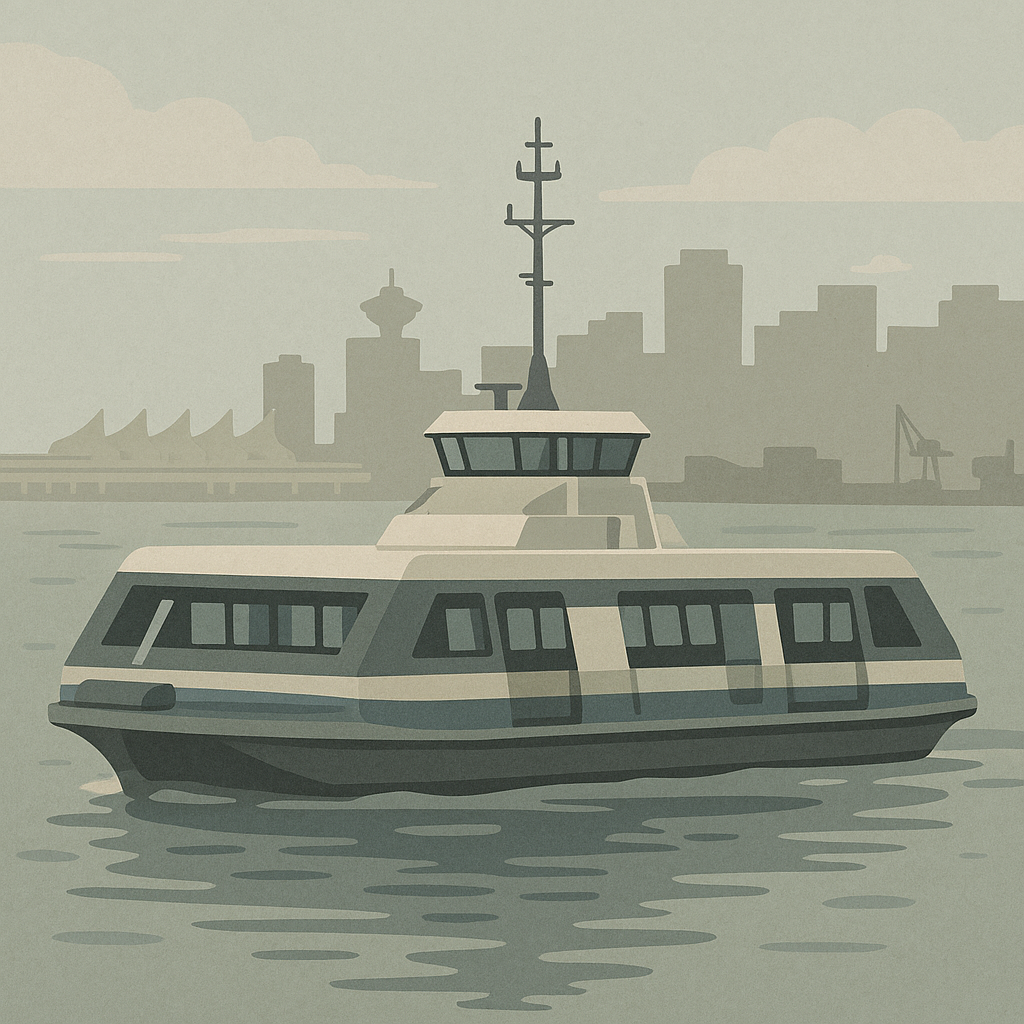
By Marilyn Anderson
August 24, 2025
When visitors step off the SeaBus from downtown Vancouver and into the bustle of Lonsdale Quay today, it’s hard to imagine the industrial roots that defined this North Vancouver shoreline just a few decades ago. Over the last 50 years, the waterfront at the foot of Lonsdale Avenue has undergone one of the most striking transformations on the North Shore, from working shipyards and warehouses into a vibrant public space filled with markets, art, restaurants, and some of the best views of the city skyline.
A Working Waterfront
For much of the 20th century, the Lonsdale waterfront was dominated by heavy industry. Shipbuilding and repair yards defined the area, with Burrard Dry Dock and other facilities employing thousands of North Shore residents. The hum of cranes and the clang of metal were the soundtrack of daily life. While this industrial base was vital to the local economy, it also meant the waterfront was largely closed off to the public. Few imagined that one day the area would become one of the Lower Mainland’s most popular gathering spots.
A Market by the Sea
That began to change in the early 1980s. In 1986, timed with Vancouver’s Expo 86 World Fair, the City of North Vancouver and provincial partners launched the Lonsdale Quay Market. Housed in what had been an industrial site, the market was envisioned as both a community gathering place and a tourism draw. With food stalls, artisan vendors, and a lively atmosphere, the market brought people back to the waterfront in a way not seen for generations.
The SeaBus, which began operating in 1977, had already started to reshape the area by connecting North Vancouver to downtown in just 12 minutes. Lonsdale Quay Market built on that new accessibility, offering a reason for visitors and commuters to linger.
Growth and Redevelopment
Through the 1990s and 2000s, development continued to reshape the Quay. The Lonsdale Quay Hotel and surrounding residential towers brought new life and density to the area. The market itself expanded and modernized, adapting to changing consumer tastes while keeping its role as a showcase for local businesses and food culture.
A major shift came in the early 2000s with the redevelopment of the adjacent Shipyards District. Once again, old industrial land was reimagined—this time as a waterfront plaza filled with restaurants, breweries, and public spaces. By the 2010s, the Shipyards had become a thriving extension of Lonsdale Quay, with outdoor concerts, night markets, and community events drawing crowds year-round.
A Dynamic Waterfront Today
Today, the Lonsdale Quay area stands as one of Metro Vancouver’s most dynamic public spaces. Visitors can wander through the public market, sip craft beer steps from the ocean, ice skate in winter, or cool off at the splash park in summer, and take in concerts under the open sky. Public art installations and heritage features also ensure the industrial history of the waterfront isn’t forgotten.
What began 50 years ago as a gritty shipyard has become a cultural and economic hub that continues to evolve with the city around it. Lonsdale Quay is now not just a gateway to the North Shore, but a symbol of how communities can reinvent their waterfronts—honoring the past while embracing the future.
Tags: #North Vancouver, #Lonsdale Quay, #Waterfront Revival, #Urban Transformation, #Shipyards District, #Explore BC
I partner with corporate clients, executive teams, and organizations seeking a clear understanding of their market impact and reach. While my work often involves collaboration with the executive suite, I also engage with clients at the foundational stages of their business development. My expertise lies in building meaningful connections and effectively communicating your message to the audiences that matter most.
LinkedIn: https://www.linkedin.com/in/marilyn-anderson-a24a73377/

